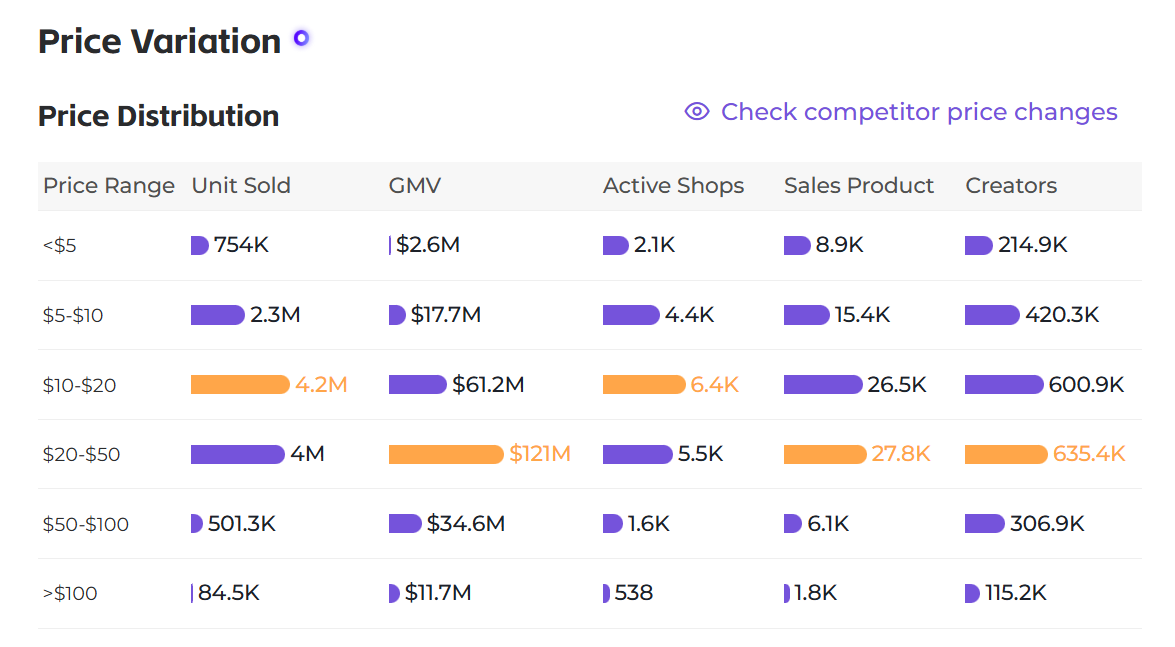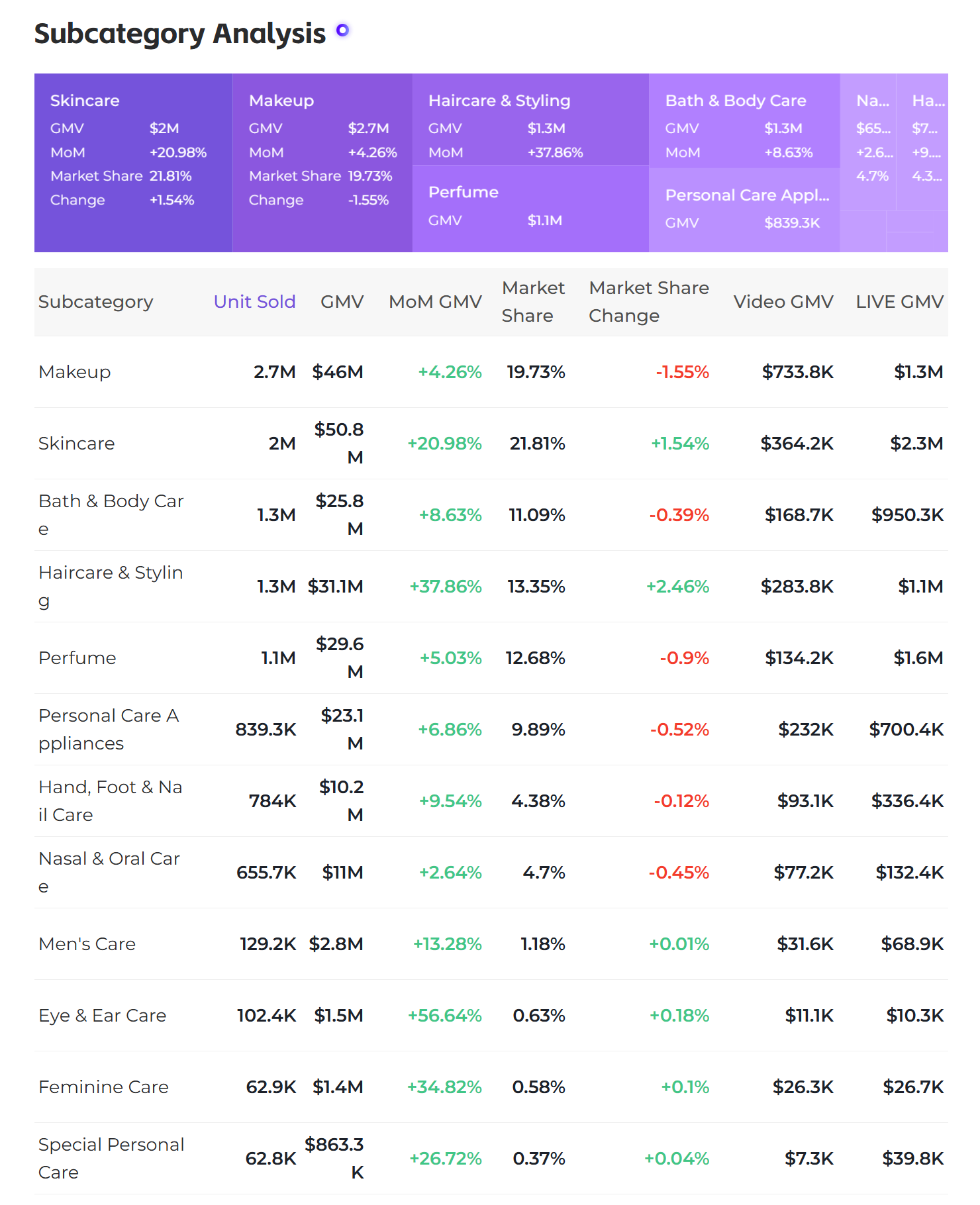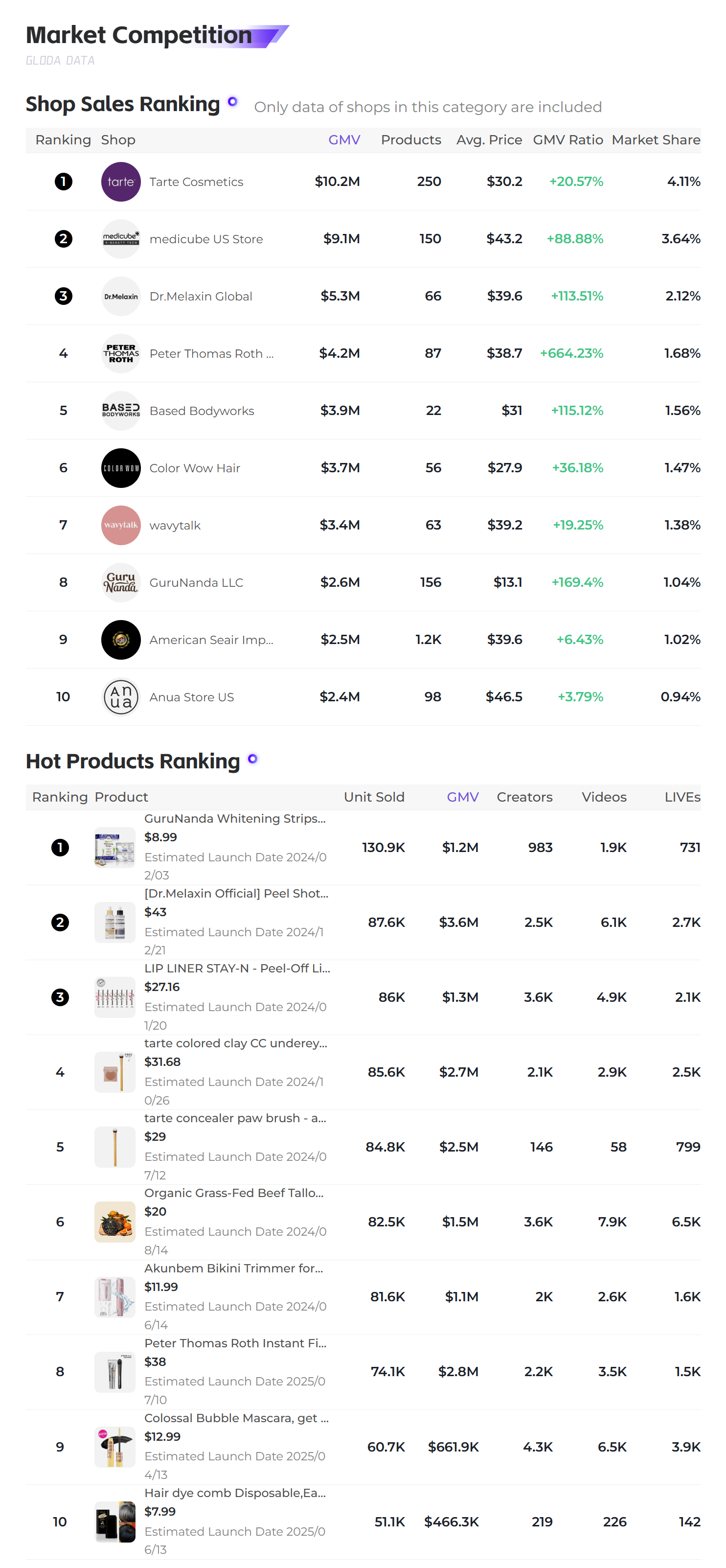July TikTok Shop Beauty Market Observation: Livestreaming Rises, Hair Care Products Strikes Back, and Value-Added Content Becomes the Key to New Hot Products
In July, the TikTok Shop beauty market continued to heat up, with total sales exceeding 10.96 million units, revenue reaching $233 million, and the number of livestreams increasing significantly by 12.16%. On the surface, this is good news for a "sales surge," but a deeper look reveals shifting content strategies, changing pricing logic, and a quietly reshaping path to hot products.
This month's key words are no longer "big-name brands competing," but rather the simultaneous surge in hair care products and affordable hits; not "new SKUs," but livestreaming driving high-volume sales, and influencers and engaging scenarios driving long-term sales.
This analysis will deconstruct four key trends from the data to help brands and merchants identify anchors for future product selection and content strategies.
Trend 1: The apparent sales increase is essentially due to increased "content retention."
The first signal from July's core data is that platform traffic is being better converted into actual purchases. ● Total sales increased by 16.23% month-over-month, with sales revenue up 12.46%, but the number of videos decreased by 1.53%.
● Average order value decreased by 3.24%, while the conversion rate reached 10.66%.
This suggests not that more content is being produced, but rather that businesses that create the right content are achieving higher conversion rates. Livestreams that "understand the user's rhythm" and "inspired videos" that thoroughly explain the product's logic are the primary drivers of sales.
Take "GuruNanda Whitening Strips," for example: priced at just $8.99, they sold 130,000 units in July through a simple "how-to" demonstration and short, micro-drama videos. This product, with its "video-based" feel, naturally fits TikTok's content rhythm and platform preferences.

Trend Two: The logic behind blockbuster products is sinking to the $10-$20 price range, with a strong correlation between "value for money" and "use case."
Blockbuster products are shifting from "brand" to "price range and expressive content." ● The $10-$20 price range achieved the highest sales volume, with 4.16 million units sold, surpassing all other price ranges.
● This price range boasts over 600,000 influencer connections, making it the most intensively connected price range across the entire platform.
The $20-$50 price range represents the largest source of GMV, reaching $121 million, demonstrating that TikTok Shop users are still willing to pay for value, provided the content is clearly explained.
For merchants, this means:
● To quickly grow sales, choose products with a clear pain point and low barrier to entry (such as tooth strips, concealers, and nose strips).
● To achieve high gross margins, livestreams or functional verification videos are essential to build a trustworthy relationship.
This is why Peter Thomas Roth Labs, through explainer-style livestreams, propelled a serum product with a nearly $40 average order value to the top of the bestseller list, resulting in a 664% month-over-month sales surge.

Trend Three: Head care enters the core market for the first time, driven by viral videos and deep user pain points.
The fastest-growing subcategory in July wasn't traditional skincare or makeup, but head care and styling. ● Sales exceeded $31.13 million, a month-over-month increase of 37.86%.
● Market share increased by 2.46%, becoming a key pillar category with a 13.35% market share.
This category adheres to the two golden rules of TikTok e-commerce content:
1. Highly visual: From "hair loss → long hair" to "before and after comparison," the content is natural and easy to film.
2. Rich scenarios and deep pain points: Hair loss anxiety, awkward styling, and lack of proper haircare routines all easily strike a chord.
Especially when paired with a "light education + light entertainment" content style, it easily triggers a cycle of shares, comments, and likes, leading to inclusion in the platform's recommendation system.

Trend 4: Brand competition shifts from "multiple SKUs" to "single hit product + strong content."
Looking at the small store rankings and hot product rankings, several typical examples of "content-driven product selection" emerged this month:
●Based Bodyworks: With only 22 SKUs, sales reached nearly $4 million. It exemplifies a "forceful" approach: selecting the right product, building a network of influencers, and using content to thoroughly promote a single product. ● Dr. Melaxin: With Peel Shot, the company's core SKU, the company leveraged livestreams and short videos to repeatedly amplify before-and-after comparisons, driving sales of 880,000 units and exceeding $3.62 million in revenue.
● Peter Thomas Roth Labs: By leveraging high-quality content and livestreaming strategies, the company achieved 664% month-over-month growth, demonstrating that "content depth" can still drive high customer spending.
In other words, TikTok Shop no longer encourages "selling products based on market probability," but instead returns to the essential "product x content" combination.

More recommendations

